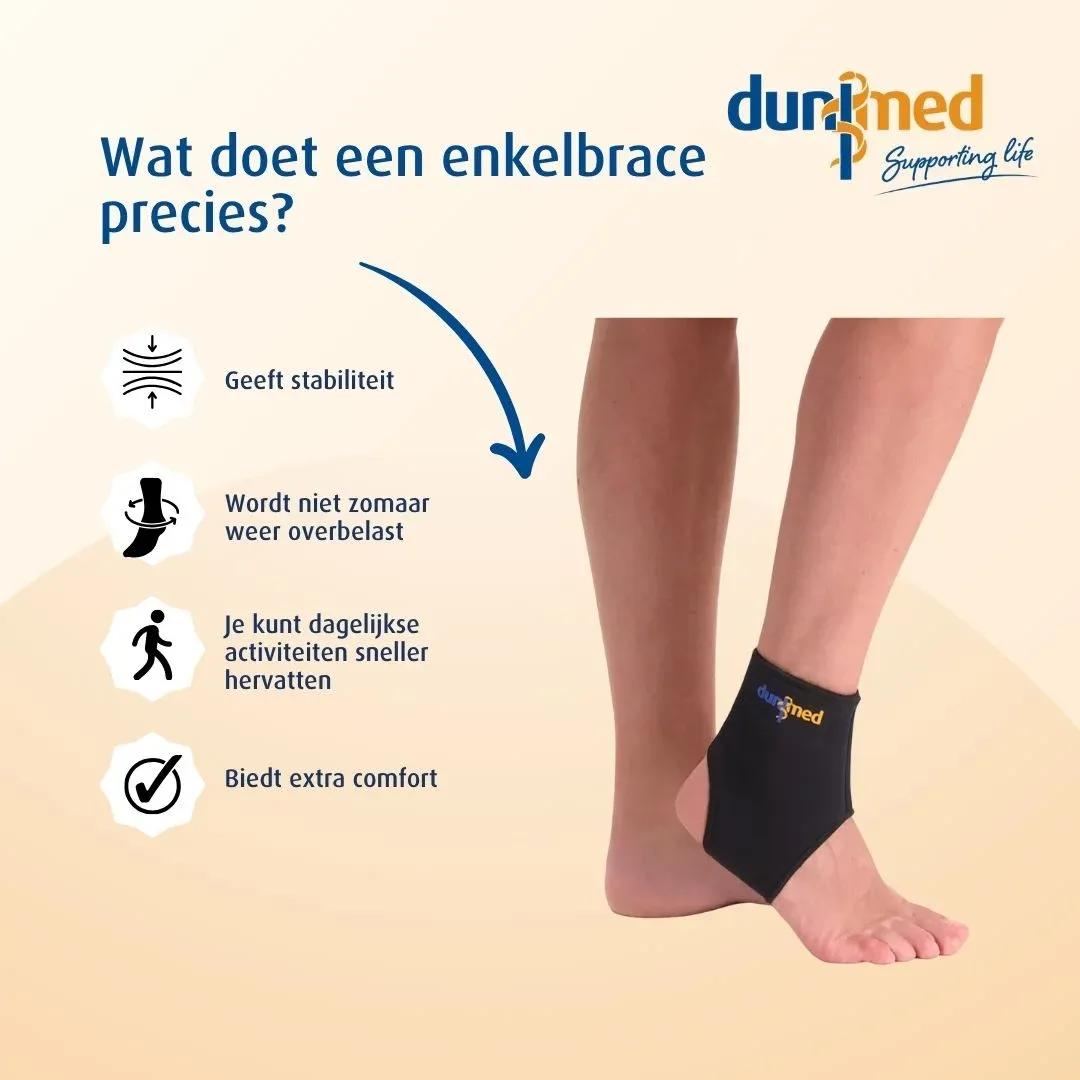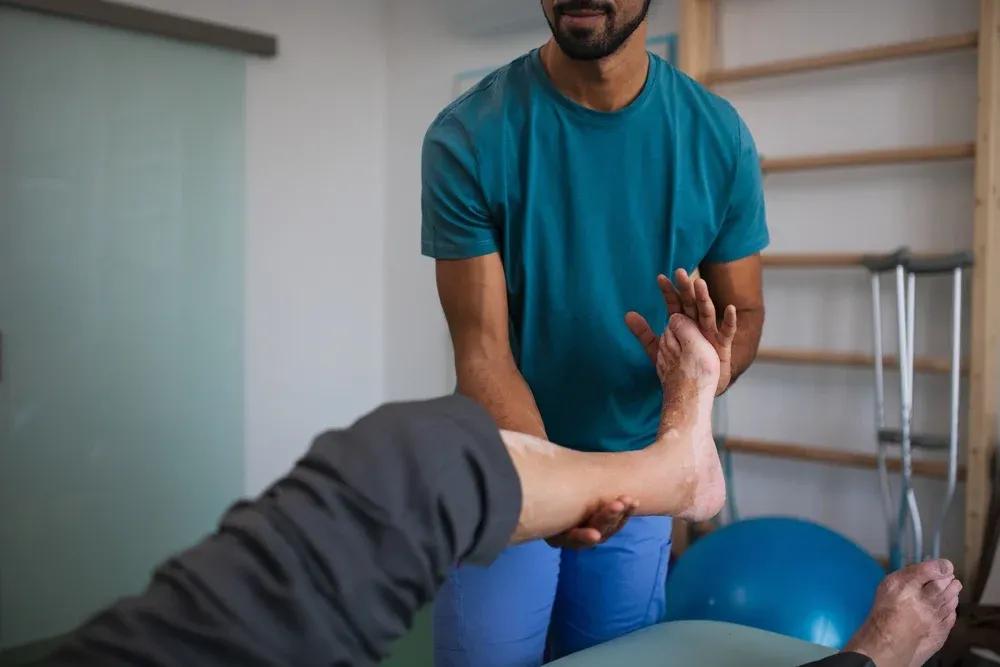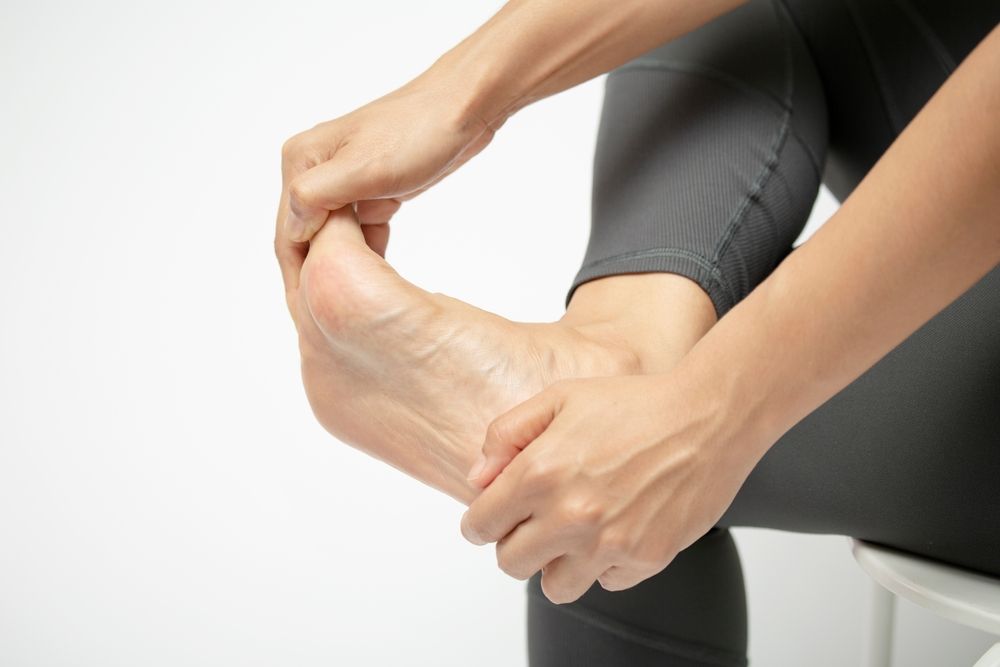Have you ever wondered when you should wear an ankle brace? Whether you are recovering from an injury, frequently twist your ankle or simply want to prevent problems, an ankle brace can offer a solution.
It helps to strengthen your ankle, provides support and can help prevent repeated injuries. Would you like more information about when an ankle brace is right for you? Then read on and discover which brace best suits your situation.
The blog in brief:
- An ankle brace provides support for sprained or bruised ankles
- You can wear a brace during sports or work for extra stability
- It prevents you from twisting your ankle again in case of instability or weakness
What exactly does an ankle brace do for your ankle?
An ankle brace provides stability to your ankle joint. This may be necessary after an injury or if you have weak ankle ligaments. The brace ensures that your ankle does not simply sprain or become overloaded again. The support allows you to resume your daily activities or sports more quickly, without overloading your ankle.
A brace does not prevent you from using your ankle, but it does limit risky movements. Think, for example, of twisting your ankle during an unexpected step. This is especially important for people with a bruised ankle or previous injuries. A brace can also provide comfort and security if you have to stand or walk a lot at work, such as nurses.

In which situations is wearing an ankle brace recommended?
An ankle brace is not just for top athletes. Wearing a brace can also be sensible in everyday life. There are various situations in which the use of an ankle brace is advisable:
- If you have just sprained or bruised your ankle
- During sports, such as football, to protect the ankle from further injury
- For weak ankles or chronic ankle problems to prevent aggravation
- When you notice that your ankle often gives way or feels unstable when walking
What are the advantages of an ankle brace?
A brace can provide just the support you need. This is certainly no luxury during rehabilitation or while working or playing sports. The right brace aids recovery and prevents new complaints. Other advantages of an ankle brace include:
- An ankle brace supports your ankle during movement without completely blocking it
- It helps reduce swelling and pain in a bruised ankle
- You gain more confidence in your movements while walking, working or playing sports
- It prevents repeated sprains or unexpected missteps
How do you know if an ankle brace is right for you?
Not sure if an ankle brace can relieve your symptoms? In many cases, wearing a brace can give you the extra security you need. However, it is important to listen to your body. If your symptoms persist, it is always wise to make an appointment with a physiotherapist.

Braces for different situations
A sports ankle brace is often a good investment for recurring injuries during football or other sports. Do you have difficulty climbing stairs or feel unsteady when walking? A brace can help to strengthen your ankle. For those working in healthcare or retail, a comfortable brace is essential for long shifts. A brace also offers seniors with instability or fear of falling more freedom of movement and confidence.
What can you do yourself to strengthen your ankle?
In addition to wearing a brace, there are other things you can do to strengthen your ankle. Prevention plays an important role, especially if you have had ankle problems in the past. By actively training and taking good care of your ankle, you reduce the risk of injury. You can do the following things for your brace:
- Regularly practise balance and coordination exercises to strengthen your ankle
- Wear sturdy shoes that fit your foot and ankle well
- Avoid overexertion, especially if you have previous injuries or weak ankles
- Combine the use of a brace with taping or physiotherapy if necessary

What are frequently asked questions about ankle braces?
Many people wonder how long they should wear a brace. This varies depending on the situation. Sometimes a few days is enough, for example in the case of a minor sprain. In other cases, such as recurring complaints, you can wear the brace preventively during sports or work. People also wonder whether a brace is comfortable enough for daily use. Modern braces are lightweight, breathable and fit into most shoes, making them suitable for long-term use. Special comfortable models are available for older people or those who have to stand a lot.
Order the ankle brace that best suits your situation
Whether you play sports, work or are recovering from an injury, wearing an ankle brace can help you stay mobile and prevent injuries. At Podobrace, you will find various ankle braces that are suitable for sports, work or everyday use. Our specialists will be happy to help you choose the right brace for your situation. Do you have any questions about our ankle braces? Please feel free to contact us.







